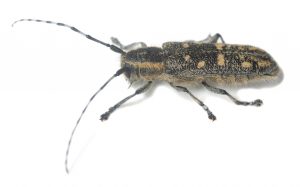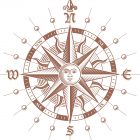Trending
Tree Care: Preventative medicine for healthy gardens
BY RHONDA KRONYK
August, 2016
One of the joys of summer is watching annuals and perennials blossom, shrubs grow larger and trees turn into leafy canopies. However, as trees fill out, you may notice that they aren’t quite as healthy-looking as they used to be. Well, don’t fret—you’re likely dealing with one of four common tree diseases here in Alberta: black knot, bronze leaf, poplar borer and ash leaf cone roller. The really good news? You might not need to take drastic action. Like any good doctor, your best defense is knowledge and preventative care. Here are the basics to get you started.
Black Knot Disease
What it is: Black knot is a fungus that’s easily identified by the ugly black knobs it forms on a tree’s branches. The plants most affected are plums, apricots, cherries, Maydays and chokecherries. If left unchecked, black knot will kill an infected tree.
The signs: It can be difficult to spot in early stages. Look for a brown swollen area on this year’s or last year’s growth—this swollen area is the early sign that the fungus has taken root. By the following spring, black knots will appear. The fungus spreads easily to neighbouring trees by birds and insects, wind and rain and even by unsterilized pruning shears.
The treatment: The key to controlling black knot is to catch and treat it early. Pruning is the only effective way to control the fungus. Trim branches at least 6 to 8 inches below the diseased area, and clean your tools in a bleach solution after each cut. Carefully dispose of infected material—in St. Albert you can take bagged cuttings to the diseased woodpile at the compost depot. In serious cases, you may have to remove the tree in order to save others.
Bronze Leaf Disease
What it is: Bronze leaf disease is a highly infectious fungus that affects columnar poplars, especially the Swedish Columnar Aspen. The fungus takes hold on leaves that remain on the tree over the winter.
The signs: In August and September, infected leaves become a rusty bronze colour, while the leaf vein remains bright green. Once some leaves are discoloured, the entire tree is infected and will require constant pruning to extend its life and to prevent it from spreading to neighbouring trees, especially Alberta’s native trembling aspens that fill our river valleys.
The treatment: The only way to control it is to immediately prune affected branches with the same precautions you’d take for black knot fungus (See above). One of the best ways to prevent or reduce the impact of bronze leaf is to limit the number of poplars in your yard; others include giving them enough space to limit contact between trees and providing good airflow.
Poplar Borer

What it is: The poplar borer is a beetle that affects aspen, balsam, poplar and willows. In early summer, female beetles bore into trees and lay one or two eggs. The larvae then move into the sap and heartwood where they eat and grow for two years before leaving the tree.
The signs: Look for small holes on the southwest side of the tree at about waist height. Often, the first hint of an invasion is dripping sap.
The prevention: The best plan of action is to catch this pest early. Poplar borers can be controlled by inserting a long piece of fine wire into the hole and piercing the larvae. While pesticides can be sprayed into the holes, some experts advise against their use because they can kill off natural enemies. A preferable solution is to spray nematodes into the holes. Nematodes are microscopic worms found in soil that feed on bacteria, fungi and insects but won’t harm you or your pets. The nematodes feed on the larvae, preventing them from growing and causing further damage.
Ash Leaf Cone Roller
What it is: Ash leaf cone roller caterpillars infect green, black, Manchurian and white ash trees. In the spring, caterpillar larvae feed on new leaves until they drop from silky threads to untouched leaves and roll the leaf into a cone for protection. They spin cocoons inside the cone and emerge several weeks later as small grey moths. The caterpillar first appeared in the Edmonton region in 1999—today almost all urban ash trees in the region are affected.
The signs: Typically, lush trees begin to look sickly when their leaves seemingly shrink and wither. While unsightly, the caterpillars that cause the damage do not harm the tree unless the infestation lasts for many seasons.
The treatment: Natural predators are the best defense against cone rollers. Pesticides are not recommended because the rolled leaf protects the caterpillar and may kill its natural enemies, especially a tiny non-stinging wasp that kills many of the caterpillars.
Preventative Medicine
Jim Hole of Hole’s Greenhouses & Gardens says that the best thing gardeners can do is prepare carefully before planting trees. “Most people look at the leaves to see if their tree is healthy,” says Hole. “They forget about the foundation. If a tree’s roots aren’t healthy or you don’t purchase high quality stock, the tree’s natural defenses are compromised, and they become susceptible to pests and fungi.”
Once trees are planted, inspect them carefully once a week. This may seem excessive, but early intervention is the best way to maintain tree health. If you see anything that concerns you, Hole’s Greenhouses & Gardens here in St. Albert can help you diagnose the problem.
Still intimidated? Don’t be. A little knowledge goes a long way. So don’t let these potential tree threats keep you from planting trees and enjoying the beauty that they bring to our landscape. Instead, make sure your trees have good soil, lots of water and plenty of room, and they’ll do the lion’s share of defending themselves from diseases.
Happy gardening. t8n
“Most people look at the leaves to see if their tree is healthy, but they forget about the foundation. If a tree’s roots aren’t healthy or you don’t purchase high quality stock, the tree’s natural defenses are compromised, and they become susceptible to pests and fungi.”
–Jim Hole, Hole’s Greenhouses & Gardens
Preventing Disease
To keep plants and trees healthy, follow these simple tips:
Plant a variety of plants so that fungus and pests won’t spread easily.
Choose trees that suit your soil conditions.
Inspect and prune regularly.
Don’t damage bark with the lawnmower or weed eater.
Water often.












